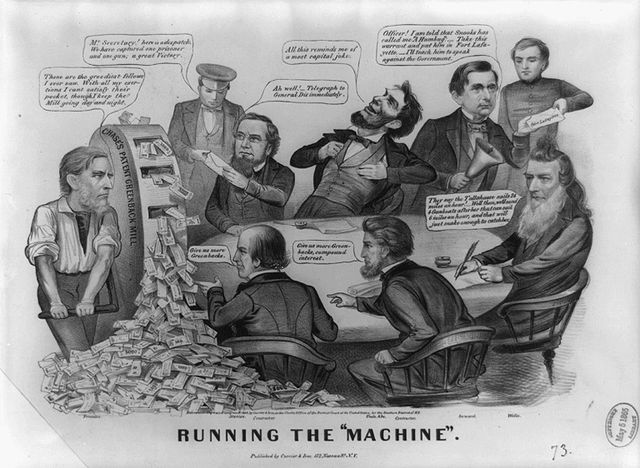Fractional currency, also referred to as shinplasters, was introduced by the United States federal government following the outbreak of the Civil War. These low-denomination banknotes of the United States dollar were in use between 21 August 1862 and 15 February 1876, and issued in denominations of 3, 5, 10, 15, 25, and 50 cents across five issuing periods. The complete type set below is part of the National Numismatic Collection, housed at the National Museum of American History, part of the Smithsonian Institution.
Fifty-cent fractional currency depicting Francis E. Spinner, with autograph signature.
Encased postage designed by John Gault.
Spinner's initial signed design (photo)
Original model artwork
William Pitt Fessenden was an American politician from the U.S. state of Maine. Fessenden was a Whig and member of the Fessenden political family. He served in the United States House of Representatives and Senate before becoming Secretary of the Treasury under President Abraham Lincoln during the American Civil War. Fessenden then re-entered the Senate, where he died in office in 1869.
Running the "Machine" An 1864 cartoon featuring Fessenden, Edwin Stanton, Abraham Lincoln, William Seward and Gideon Welles takes a swing at the Lincoln administration.
Bureau of Engraving and Printing portrait of Fessenden as Treasury Secretary
Fessenden was one of only three people depicted on United States Fractional currency during their lifetime.
Frederic Porter Vinton's portrait of Fessenden, posthumous. Circa. 1870








